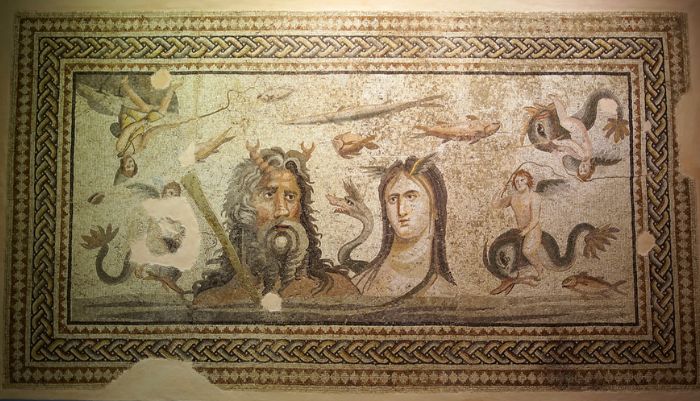 History
HistoryZeugma Mosaic Museum and Its Magnificent Artifacts
By SU Magazin / 2023-01-11We will explore up close the Zeugma Mosaic Museum located in Gaziantep, which hosts works that are thought to be the most important mosaics in the world. Mosaics unearthed from Zeugma Ancient City and its surroundings form a unique collection. Let's take a look at the history of the ancient city of Zeugma, then the Zeugma Mosaic Museum, and the details of the unique artifacts that we can see in the museum.
History of Zeugma Ancient City
The Ancient City of Zeugma was established in 300 BC on an area of approximately 20 thousand acres within the borders of Belkis Bay of Nizip district of Gaziantep. It has maintained its importance throughout history because it is at the shallowest point of the Euphrates River and is located in a strategic region in military and commercial terms. When Seleukos Nikator, one of the generals of Alexander the Great and later the King of Syria, first founded the city in 300 BC, he named it Seleukos Euphrates (Silifke of the Euphrates). After the Roman Empire annexed it in the 1st century, its name was changed to "ZEUGMA", which means "bridge" / "gate" and is still known by the same name today. In the 7th century, the city was abandoned as a result of the Islamic raids and in the 16th century, Belkis Bay was established with its current name.
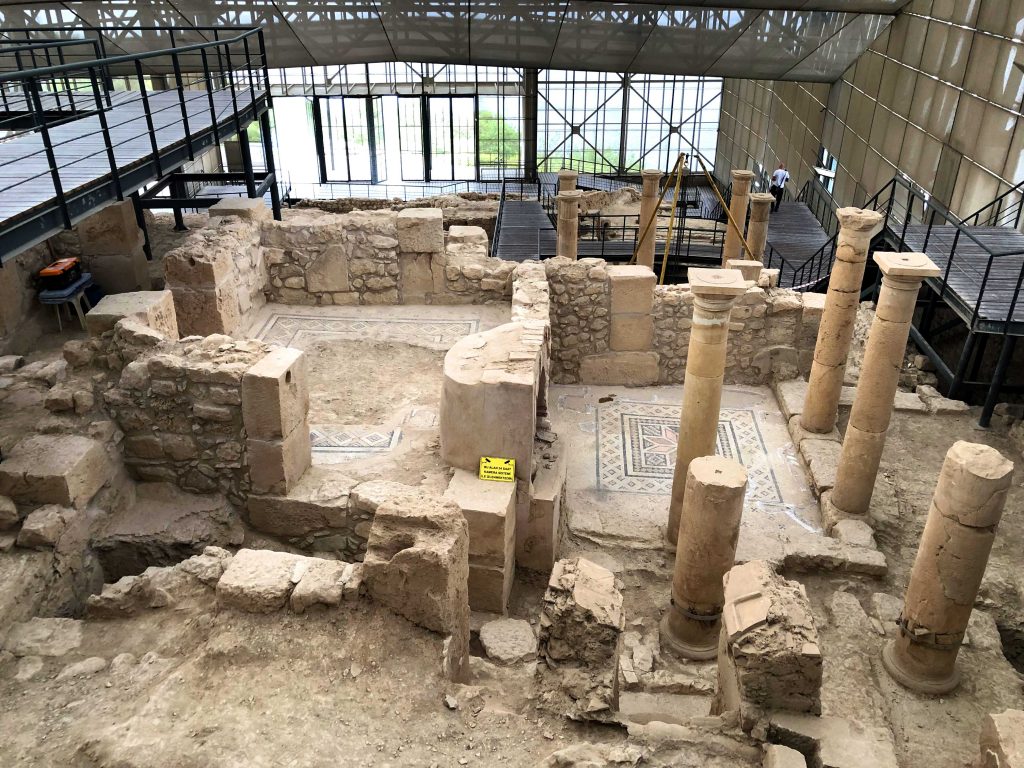
About Zeugma Mosaic Museum
In the Zeugma Mosaic Museum collection, 3,000 square meters of mosaics, 140 square meters of frescoes, 4 Roman fountains, 20 columns, 4 limestone statues, bronze statues of the god Mars, tomb stelae, sarcophagi and architectural pieces belonging to Rome and Eastern Rome are exhibited. These mosaics, which are about 2000 years old, are quite extraordinary in terms of design, color, success and perfection. Three-dimensional designs and high-level techniques, the depiction of the architecture of the period, the way of life and the rich transfer of flora and fauna on mosaics make Zeugma one of the most important mosaic museums in the world. Zeugma Mosaic Museum, which is established on a total area of 30,000 square meters, 25,000 square meters of which is closed, is a complex consisting of three buildings. The museum opened on September 9, 2011. Zeugma Mosaic Museum has held the title of "the world's largest mosaic museum" for nearly 3 years; Later transferred this title to the Hatay Archeology Museum, which was opened on December 28, 2014. It currently has the distinction of being the second-largest mosaic museum in the world.
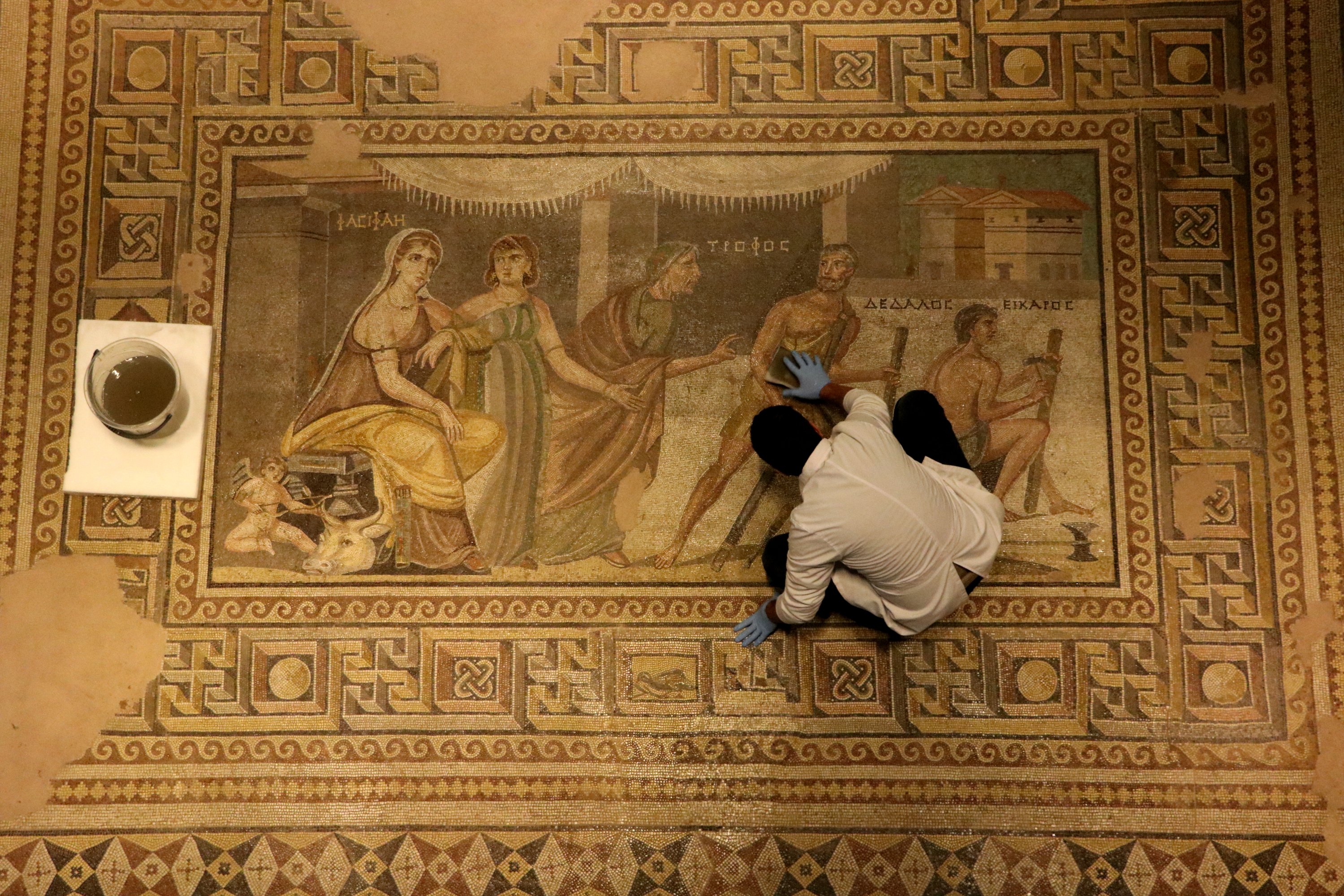
Highlights of Zeugma Mosaic Museum
Gypsy Girl
One of the most famous mosaics in the museum is undoubtedly the 'Gypsy Girl', which has become the symbol of the city of Zeugma. The Gypsy Girl was once the floor mosaic of the dining room in Mainad Villa. According to a rumor, she was called the "Gypsy Girl” because of her large hop earrings, and according to another rumor, she was given this name because her braided hair, which was parted in the middle, resembled a gypsy girl. Although a part of her face is missing, she is compared to the "Mona Lisa" by most visitors because of her gaze and the expression in her eyes.
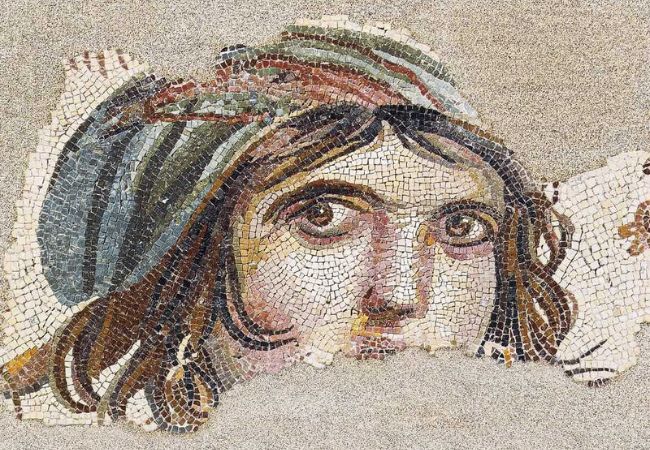
Ares (Mars) Statue
The statue of Mars, the god of war, which is one of the most important elements of the exhibition project, is positioned as if it were the protector of the museum, as it was in ancient Zeugma. The statue dominating the museum can be easily seen from all floors. 150 cm tall bronze statue made in the Roman period and remained under the ground for 1,800 years.
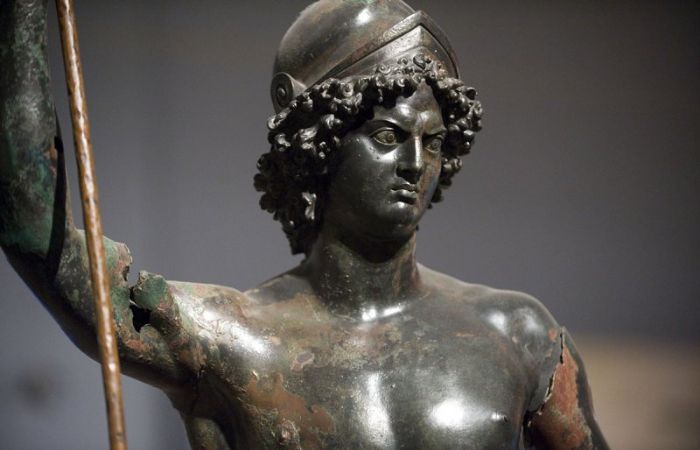
Euphrates Mosaic
Euphrates mosaic, which was unearthed with the Euphrates River gods during the rescue excavation Zeugma excavation site in 2000, was carved into the floor mosaic of an octagonal shallow pool in Zeugma. Euphrates, the god of the Euphrates River, is depicted lying on a sofa. The Euphrates River flows from the jug under his elbow and greenery spurts from the soil which meets the water. According to the legend, the tragic story of Euphrates was as follows: Euphrates, who gave his name to the Euphrates, had a son named Aksurtas. One day, Euphrates, who saw Aksurtas falling asleep next to his mother, killed his own son, mistaking it for a foreign man. Euphrates, who could not cope with the pain of this great mistake, threw himself into the Medos River and killed himself. After that day, the name of the river Medos was called Euphrates (Firat).
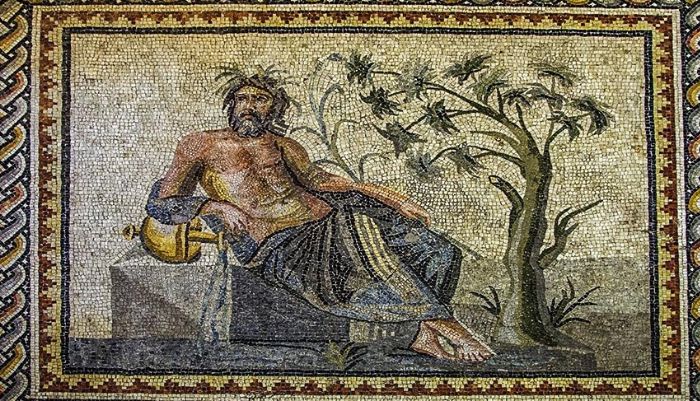
The Birth of Venus Mosaic
The birth of Venus mosaic, as the name suggests, depicts the birth of Venus, or Aphrodite, the goddess of love. There are two different legends about the birth of Aphrodite. According to the first legend, she is considered the daughter of Zeus and Dione, while according to the second legend, she is known as the daughter of Uranus. Since Romulus is believed to be a descendant of Venus, she is considered the patron goddess of Rome.
Achilles Mosaic
In this mosaic, a scene from the epic of Troy, considered the greatest work of Greek culture, is depicted. The mosaic depicts Achilles' identity being revealed by Odysseus. According to the legend, his mother and father, who do not want Achilles to participate in the Trojan War, send him to the island of Skyros, to the palace of King Lykomedes. Achilles wears women's clothes here and mixes with the other daughters of Lykomedes living in the palace. However, in the following days, Odysseus begins to look for him, upon the prophecies that Troy will not be taken if Achilles does not participate in the Trojan expedition. Knowing the warrior spirit of Achilles very well, Odysseus makes a wise plan and goes to the palace of King Lykomedes. Disguised as a traveling salesman, he enters the harem of Lykomedes and puts a few weapons in front of the girls, along with attractive fabrics and women's items. While all the women in the harem were interested in jewelry and fabrics, Achilles in women's clothes could not stand it and started to use the sword and shield. Odysseus' plan works, and Achilles' true identity is revealed. This very moment is depicted in this mosaic excavated from Zeugma.
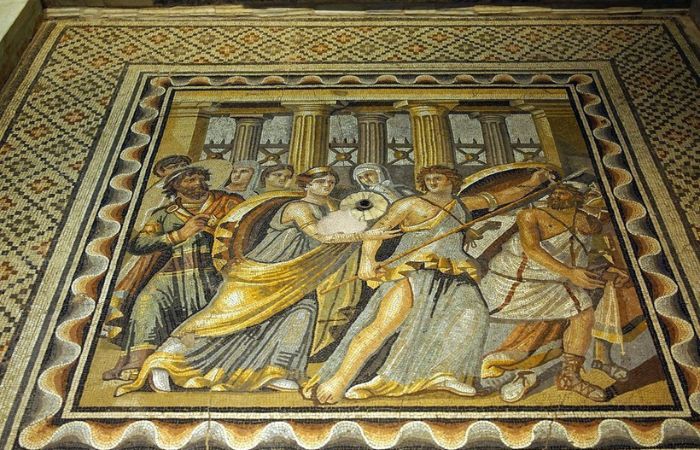
Oceanos and Tethys Mosaic
Oceanos, who was accepted as the god of the open seas in the whole world except the Mediterranean in ancient times, lived with Tethys, who symbolized the female element in the sea, and it was believed that all the rivers and rivers of the world were composed of Oceanos and Tethys. In this mosaic, which was excavated from Zeugma and is thought to be the floor of the pool or dining room of the period, Oceanos and Tethys were depicted together with sea creatures. The mosaic also depicts Eros riding dolphins and hunting.
